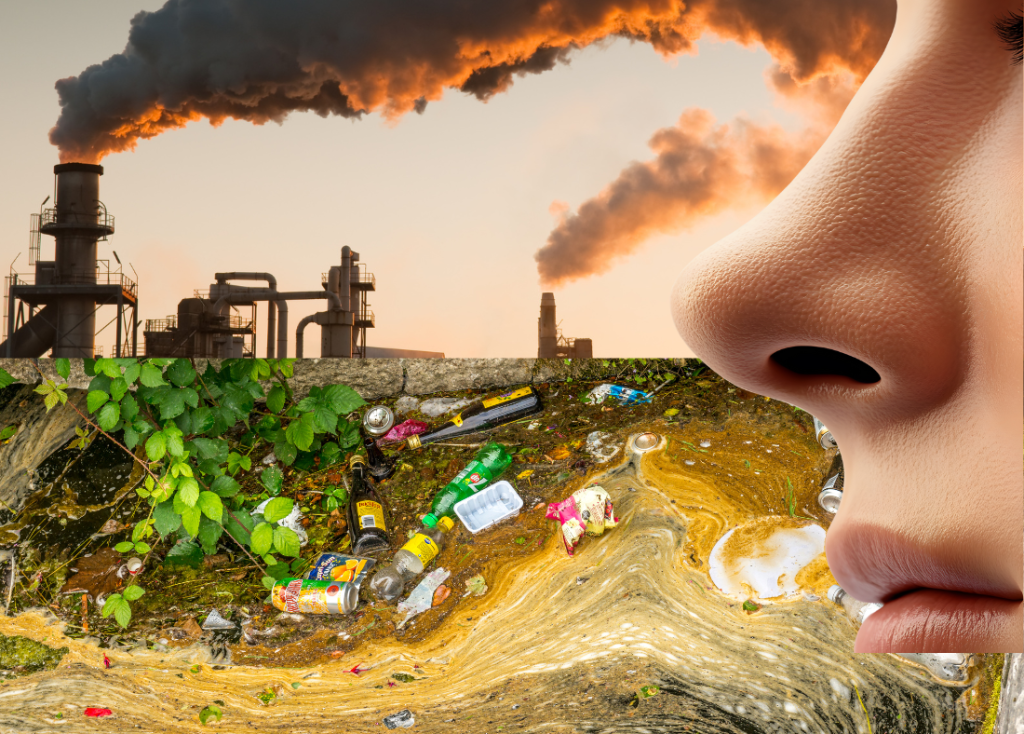By Carmen Berry, SanDiego350 Member

Historically, urban living has been associated with unpleasant smells, but what happens when these everyday odors intensify to the point where they become unavoidable?
Scent plays a crucial role in forming memories, establishing physiological connections between space and the human body. The subconscious creation of “smellscapes”, place-related hubs of scent and odor, helps to contextualize humans within their settings and build emotional bonds. If you live in a city, you’ll likely find comfort in the modern “smellscapes” your senses have grown accustomed to from living in that place (Creating Smellscapes, Jieling Xiao). Smellscapes encompass the combination of physical odors associated with a place, ranging from the natural to the synthetic and the pleasant to the unpleasant. As humans’ sensory maps continue to evolve in the midst of growing urbanization, climate change is disrupting them by altering atmospheric conditions in a way that heightens chemical odors and their effect on human life.
In the midst of radical climate changes exacerbated by the combustion of fossil fuels and industrial manufacturing, humankind is experiencing an invisible but devastating loss to our shared sensory perception – scent pollution. Scent pollution is described as the release of organic or man-made compounds that react with ozone to create secondary pollutants, which can lead to respiratory and psychological health issues (Odor Pollution, EBESCO). Climate change will result in increased scent pollution as heat and humidity accelerate the distribution of odor molecules, causing environmental odors to become more persistent and more intense. By amplifying the effects of scent pollution, climate change is shaping increasingly hostile urban smellscapes with severe social consequences for those living in proximity to polluting facilities.
Increasing humidity and climbing temperatures brought about by climate change are intensifying chemical odors, impacting economically disenfranchised communities and exposing vulnerable populations to heightened health risks. According to the 2020 census, approximately 80% of Americans live in classified “urban” environments, making them more frequently exposed to chemical pollutants (PEW Research Center). Despite the unspoken effects of odor on physical well-being, many of our most harmful pollutants are unregulated, including food and human wastes. These pollution sources are enabled by poor manufacturing regulations and outdated waste management systems, forcing systemically-neglected populations living in proximity to pollution sources to bear the impact of the escalating sensory burdens. Chronic odor serves to further isolate these communities by limiting economic and social opportunities, reinforcing cycles of economic disadvantage.
By broadening the impacts of scent pollution, climate change has contributed to the creation of hostile sensory environments that disproportionately burden low-income, BIPOC communities. The economically stratified impacts of climate change are nothing new; however, the sensory deprivation associated with long-term pollution exposure poses a uniquely cruel form of alienation that diminishes urban livability and risks physical harm. This can be seen in the city of San Diego, where the issue of scent pollution escalates to a public health crisis transcending international borders. In San Diego, pollution from the Tijuana River penetrates low-income, predominantly Latinx neighborhoods, carrying liquid waste runoff throughout the neighborhoods of San Ysidro and Imperial Beach. These densely populated neighborhoods along the border are forced to deal with the olfactory assault of so-called “sewer gas”, with many residents experiencing health effects from chronic exposure to these chemical wastes (Tijuana Toxic Wastes, UCSD).
The ongoing crisis of untreated scent pollution continues to erode the quality of life in cities, threatening to irreparably alter the way we engage with our surroundings. Society’s invisible smellscapes inform the connection between people and their environments, and as pollution fractures that bond, our most vulnerable communities will experience the physical, economic, and social impacts of prolonged environmental neglect.
